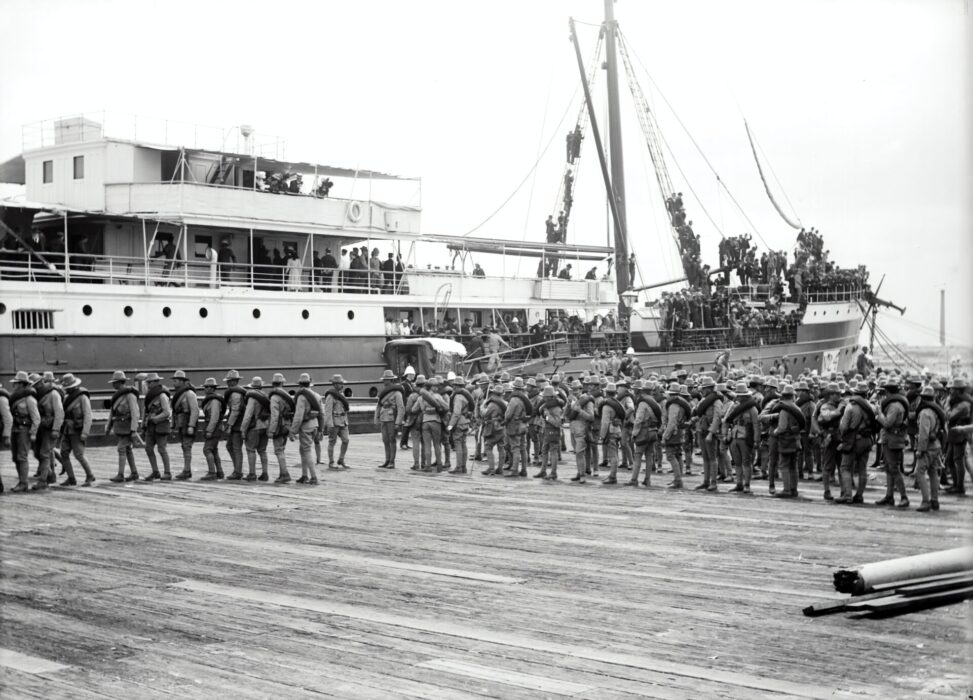Introduction:
World War I, also known as the Great War, marked a turning point in history, not only for its geopolitical consequences but also for the remarkable technological advancements it ushered in. This conflict, which raged from 1914 to 1918, saw the integration of groundbreaking technologies that forever changed the face of warfare. In this article, we’ll explore the pivotal role that technology played in World War I, its most significant innovations, and how these advancements continue to influence modern warfare.
What Did Technology Do in WWI?
Technology transformed World War I from a traditional battlefield conflict into a modern, industrialized war. Key developments included:
- Machine Guns: The introduction of rapid-fire machine guns such as the Maxim and the Lewis Gun drastically increased firepower and defensive capabilities.
- Artillery: Improved artillery systems, like the famous Big Bertha howitzer, allowed for long-range bombardments, reshaping trench warfare.
- Tanks: The birth of the tank, with the British Mark I as the pioneer, revolutionized ground warfare by providing mobile, armored firepower.
- Aircraft: World War I witnessed the birth of aerial combat with fighter planes and bombers playing a crucial role in reconnaissance and attacks.
- Chemical Warfare: Chemical weapons, like mustard gas and chlorine, introduced a terrifying dimension to the conflict, necessitating protective gear.
What Was World War I’s Best Technology?
Identifying the single best technology of World War I is challenging, as several innovations were groundbreaking. However, the tank often stands out as a game-changer. The British Mark I tank, with its ability to traverse trenches and machine gun-equipped turrets, represented a significant leap forward in mechanized warfare. Tanks not only broke the stalemate of trench warfare but also laid the groundwork for modern armored warfare strategies.
How Did Technology Contribute to WWI?
Technology contributed to World War I in various ways:
- Efficiency and Lethality: Technological advancements made weapons more efficient and deadly, leading to higher casualty rates and necessitating new defensive tactics.
- Trench Warfare: Innovations like barbed wire and machine guns entrenched both sides in brutal trench warfare battles.
- Communication: Developments in communication technology improved coordination among troops and headquarters.
- Aerial Reconnaissance: Aircraft played a vital role in reconnaissance, intelligence gathering, and spotting enemy positions.
- Medicine: Advances in medical technology helped save lives by improving field hospitals and medical care for wounded soldiers.
When Was Technology in WWI?
Technology played a pivotal role throughout World War I, from its outbreak in 1914 until the armistice in 1918. However, the technological legacy of the war continued to shape military strategies and innovation well beyond its conclusion, influencing the course of the 20th century.
The Legacy of World War I Technology: Shaping Modern Warfare
The technological innovations of World War I did not fade away with the end of the conflict. Instead, they left an enduring legacy that continues to influence modern warfare and technology development. In this section, we will explore how the advancements of World War I have shaped the world we live in today.
1. Modern Armored Warfare: The Tank’s Influence The tank, a revolutionary invention of World War I, laid the foundation for modern armored warfare. Today’s tanks, with their formidable firepower and advanced armor, owe their existence to the pioneering designs of the Mark I tank. Armored vehicles play a pivotal role in contemporary conflicts, combining mobility and firepower to dominate the battlefield.
2. Aerial Domination: Air Power’s Evolution World War I saw the birth of aerial combat, a trend that has only intensified in the modern era. Fighter planes, bombers, and reconnaissance aircraft have become essential tools for militaries worldwide. The principles of aerial warfare developed during World War I continue to guide the strategies of air forces today.
3. Chemical Warfare: The Need for Arms Control The use of chemical weapons in World War I led to international efforts to control and prohibit their use. The Chemical Weapons Convention, signed in 1993, remains a vital treaty aimed at preventing the use of chemical agents in warfare. The horrors of chemical warfare during World War I serve as a reminder of the importance of disarmament.
4. Communication Breakthroughs: The Information Age Advancements in communication technology during World War I, such as radio and telegraph, laid the groundwork for the information age. Today’s militaries rely heavily on secure and rapid communication systems, ensuring efficient coordination and intelligence sharing.
5. Medical Advances: Saving Lives on the Battlefield The medical innovations of World War I, including better field hospitals and improved trauma care, have evolved into modern medical practices. Military and civilian medical professionals continue to learn from the experiences of World War I to save lives on the battlefield and in hospitals worldwide.
Conclusion:
World War I stands as a testament to the transformative power of technology in warfare. The innovations born out of necessity during this conflict forever changed the face of military engagement and continue to shape modern warfare tactics and strategies. As we look back on the Great War, we must recognize the profound impact of technology on the course of history.
